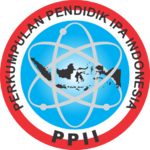Effect of Fermentation Duration and Yeast Amount on the Quality of Jackfruit Seed Tempe
Pengaruh Durasi Fermentasi dan Jumlah Ragi Terhadap Kualitas Tempe Biji Nangka
Abstract
Tempeh is a processed product from soybean plants. However, lately the existing soybean supply has not been able to meet the needs of the raw material for the tempe processing industry, so an alternative soy substitute is needed. One ingredient that can be used as a substitute for soybean is jackfruit seeds. This study aims to determine how to process jackfruit seeds into tempeh and comparison of nutritional content between jackfruit seed tempeh and soybean tempeh. This research was conducted by giving tempeh yeast (Rhizopusoligosporus) 0.5 gram with 500 gram jackfruit seeds. Tempe is made with a variation of fermentation time that is 36 hours, 48 hours, 60 hours, and 72 hours and analyzed its nutrients namely protein, fat, carbohydrate, water and ash together with organoleptic tests of texture, color, taste and aroma of tempe. The results showed that the highest protein content, ash content and fat content obtained was 48 hours fermentation time, namely 6.85%, 1.67% and 0.73%. Meanwhile, the highest carbohydrate content obtained is 36 hours fermentation time. Water content that is in line with SNI tempeh standards is 36 hours and 48 hours, i.e. 64.8% and 65.58%. The most delicious tempeh, the most fragrant tempe and the most crispy tempeh obtained is 48 hours fermentation time.
Downloads
References
Harmoko, H., Sutanto, A., & Sari, K. (2016). Pengaruh pemberian jumlah takaran ragi terhadap kandungan protein yang dihasilkan pada tempe biji nangka(Artocarpus heterophyllus). BIOEDUKASI (Jurnal Pendidikan Biologi), 7(1).
Adisarwanto, T. (2010). Strategi peningkatan produksi kedelai sebagai upaya untuk memenuhi kebutuhan di dalam negeri dan mengurangi impor. Jurnal inovasi pertanian Vol.3, No.4
Astawan, M. (2009). Sehat dengan Hidangan Kacang dan Biji-bijian. Jakarta : Swadaya.
Babu, Dinesh, Bhakyaraj, Vidhayalaksmi. (2009). Alow Cost Nutritious Food “Tempeh”A Review. World Journal of Dairy and Food Sciences. Vol. 4, No.1.
Barus, Antonius S., Aris T., Hanny W. (2008). Role of Bacteria In Tempe Bitter Taste Formation: Microbiological And Molecular Biological Analysis Based on 16s rRNA Gene. Microbiology journal. Vol. 2, No. 1.
Dwinaningsih, E. A. (2010). Karakteristik Kimia Dan Sensori Tempe Dengan Variasi Bahan Baku Kedelai/Beras Dan Penambahan Angkak Sertavariasi Lama Fermentasi. Skripsi: Fakultas Pertanian. Universitas Sebelas Maret: Surakarta (Online). (eprints.uns.ac.id/210/1/17042241.pdf) (akses tanggal 5 Maret 2013).
Departemen pertanian, (2012). Laporan kinerja kementerian pertanian. (Online). (http://www.deptan.go.id/pengumuman/berita/2012/laporan)(akses tanggal 8 Maret 2013)
Fairus, S., Haryono, Agrithia M., Aris A. (2010). Pengaruh Konsentrasi HCI dan Waktu Hidrolisis terhadap Perolehan Glukosa yang Dihasilkan dari Pati Biji Nangka. Jurnal Seminar Nasional Teknik Kimia.ISSN : 1693-4393.
Hanif, Maritza. (2009). Produksi karakterisasi tepung kasava termodifikasi. Skripsi: Departemen Teknologi Industri Pertanian Fakultas Teknologi Pertanian.IPB: Bogor. (Online). (repository.usu.ac.id/bitstream.pdf) (akses tanggal 5 Maret 2013).
Hayati, S. (2009). Pengaruh Waktu Fermentasi Terhadap Kualitas Tempe Dari Biji Nangka (Artocarpus Heterophyllus) Dan Penentuan Kadar Zat Gizinya. Skripsi: Departemen Kimia Fakultas Matematika dan IPA. Universitas Sumatera : Medan. (Online). (repository.usu.ac.id.pdf) (akses tanggal 5 Maret 2013).
Hidayat, N., Mediara CP, Sri S. (2006). Mikrobiologi Industri. Yogyakarta : Andi.
Authors who publish with ISEJ: Indonesian Science Education Journal agree to the following terms:
- Authors retain copyright and grant the ISEJ: Indonesian Science Education Journal right of first publication with the work simultaneously licensed under Creative Commons Attribution License (CC BY 4.0) that allows others to share the work with an acknowledgment of the work's authorship and initial publication in this journal.
- Authors can enter into separate, additional contractual arrangements for the non-exclusive distribution of the published version of the work (e.g., post it to an institutional repository or edit it in a book), with an acknowledgment of its initial publication in this journal.
- Authors are permitted and encouraged to post their work online (e.g., in institutional repositories or on their website) before and during the submission process, as it can lead to productive exchanges, as well as earlier and greater citation of published work.












